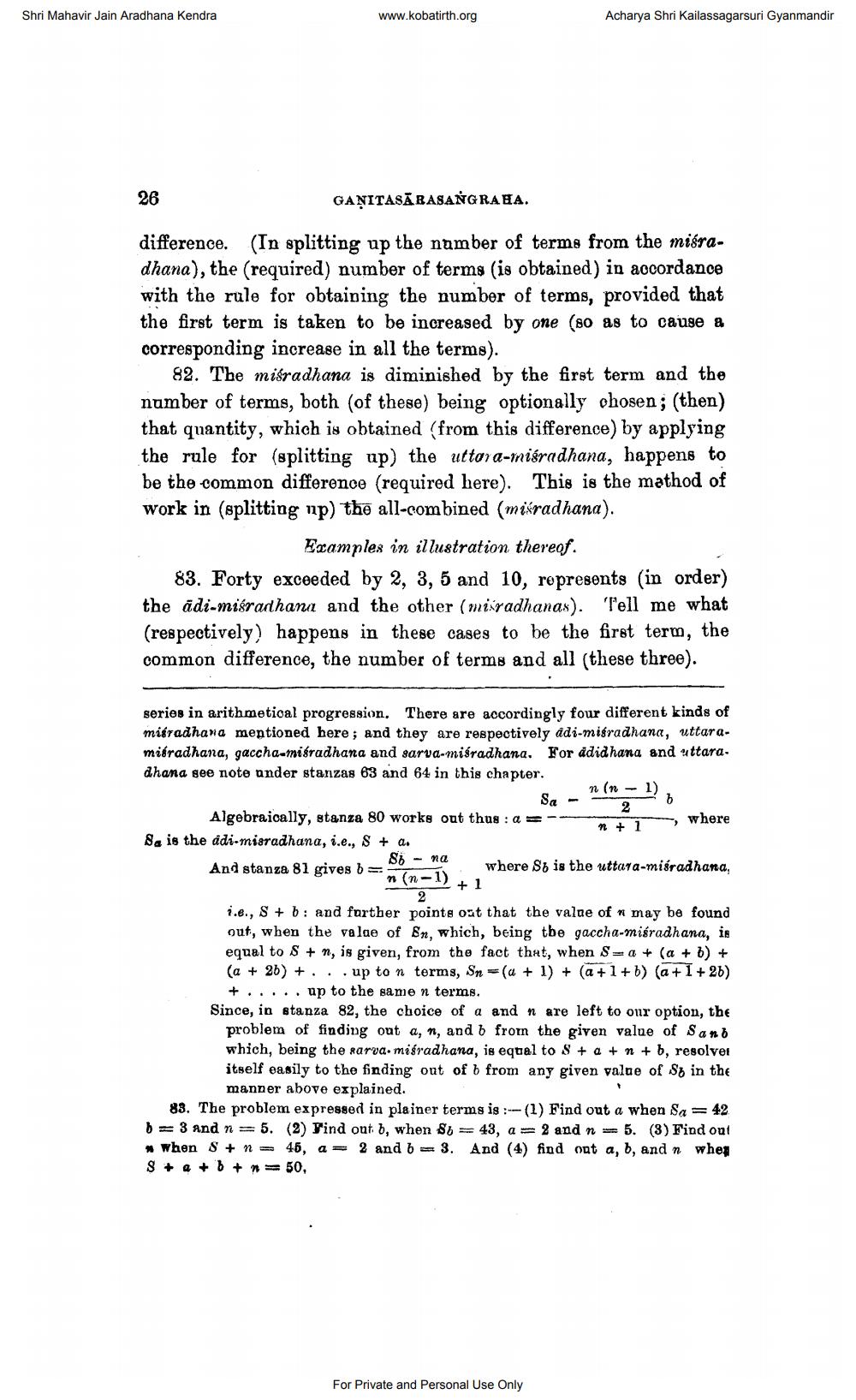________________
Shri Mahavir Jain Aradhana Kendra
www.kobatirth.org
Acharya Shri Kailassagarsuri Gyanmandir
26
GANITASĀBASANGRAHA.
difference. (In splitting up the number of terms from the miśradhana), the (required) number of terms (is obtained) in accordance with the rule for obtaining the number of terms, provided that the first term is taken to be increased by one (so as to cause a corresponding increase in all the terms).
82. The misradhana is diminished by the first term and the number of terms, both (of these) being optionally chosen; (then) that quantity, which is obtained (from this difference) by applying the rule for (splitting up) the uttora-misradhana, happens to be the common difference (required here). This is the method of work in (splitting np) the all-combined (mišradhana).
Examples in illustration thereof. 83. Forty exceeded by 2, 3, 5 and 10, ropresents in order) the adi-misradhana and the other (misradhanas). Tell me what (respectively) happens in these cases to be the first term, the common difference, the number of terms and all (these three).
series in arithmetical progression. There are accordingly four different kinds of misradhana mentioned here, and they are respectively adi-migradhana, uttaramiéradhana, gaccha-misradhana and sarva-misradhana. For ddidhana and uttara. dhana see note ander stanzas 63 and 64 in this chapter.
n(n - 1) Sa -
6 Algebraically, stanza 80 works out thus : a =- Sa is the ddi-misradhana, i.e., $ + a.
86 - na where Sy is the uttara-misradhana,
+1_
where
And stanza 81 gives b=n(n-1) + 1
i.e., S + b: and further points out that the value of may be found out, when the valae of En, which, being tbe gaccha-misradhana, is equal to S + n, is given, from the fact that, when S= a + (a + b) + (a + 2) + ... up to n terms, Sn = (a + 1) + (a +1+b) (a +1 +26)
+..... up to the same n terms. Since, in stanza 82, the choice of a and n are left to our option, the
problem of finding out a, n, and b from the given value of Sano which, being the rarva misradhana, is equal to 8 + a + n + b, resolver itself easily to the finding out of b from any given value of Sy in the
manner above explained. 83. The problem expressed in plainer terms is :-(1) Find out a when Sa= 42 b=3 and n =5. (2) Find out b, when 8b =43, a= 2 and n = 5. (3) Find out * when $ + n = 45, a= 2 and b = 3. And (4) find out a, b, and n wher 8 + + + n = 50,
For Private and Personal Use Only




